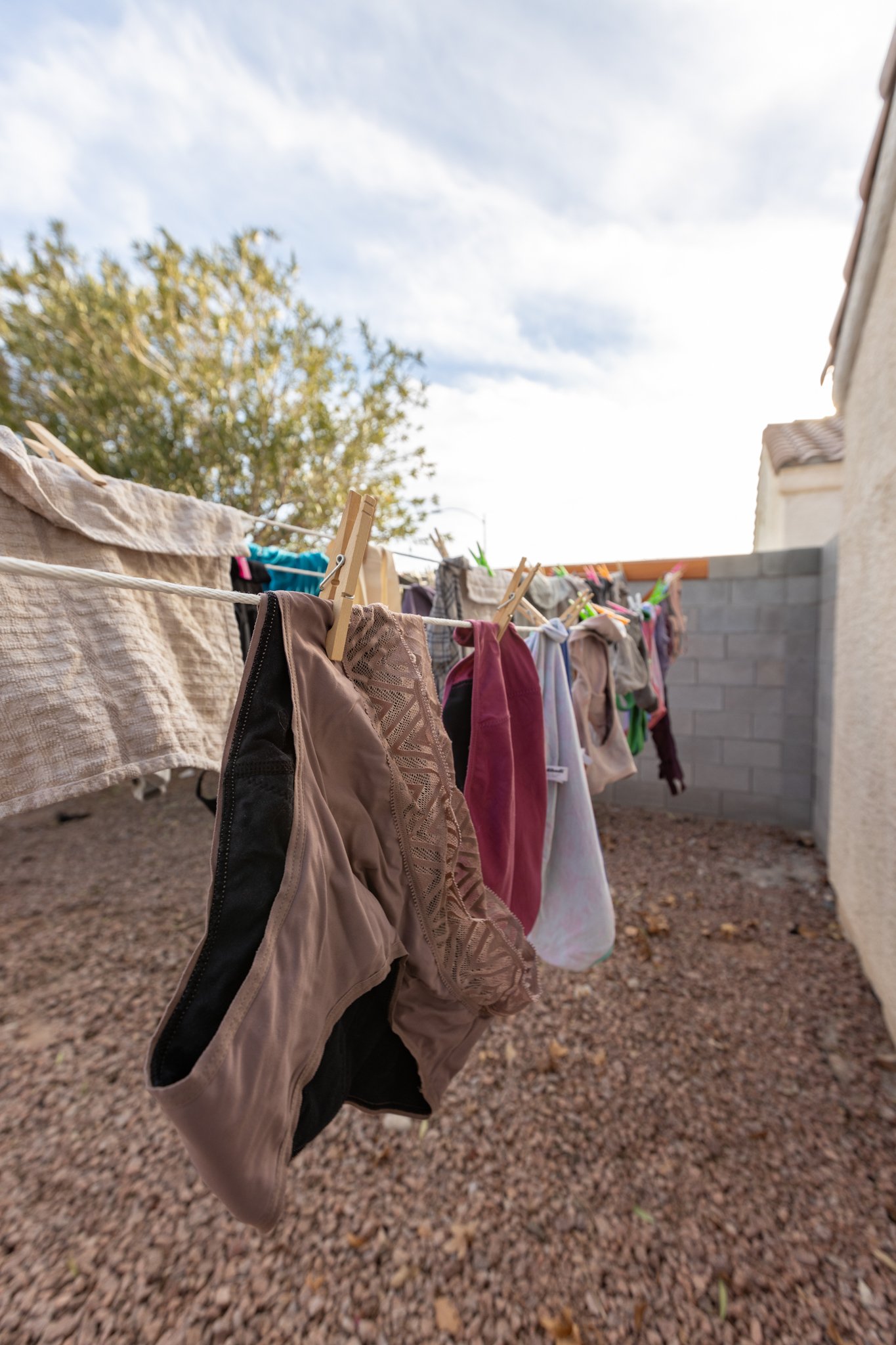My Top Zero Waste Habits
Zero waste living is not all about swaps, it’s about changing the otherwise wasteful habits in our lives, too. So, let’s talk about some eco habits that I implement on a regular basis and a few that I miss doing, too.
Composting
I love composting for two reasons:
You yield rich fertilizer
It’s probably the best way we can individually make a difference to greenhouse gas emissions
Now, the way I compost now is not ideal. I would love to try a worm bin (tips are welcome below), but for now, I use the Lomi, full thoughts here. But, I already have it and it works best for me in this small space. It still reduces food waste, but this is not nutrient-rich fertilizer. If you have the space, try a full-blown compost pile. They’re easier than you think to set up, tips here!
And, food waste in the landfill is a huge problem. It contributes to methane emissions, which are more harmful than CO2 emissions. Food has vitamins and minerals that we should return to the earth and not stuff in a plastic bag. Plus, it takes fuel to transport stuff to the landfill.
As I’m publishing this, I just got a worm bin! Tips are welcome :)
Line drying
This is a low-waste habit I truly miss! Now, I line dry as much as I can inside my apartment, but nothing beats line-dried clothes with sun hitting them and a nice breeze to fluff them. We did this exclusively in Las Vegas, which was the perfect weather for it. So, yes, you can line dry in any climate and any season, it’s just that some of those seasons and locations may require you to do so indoors.
While it doesn’t save you the most money in the world, the savings do add up. You use less electricity, and it allows you some time outside. It takes some extra time, but I loved how therapeutic it was. I would love to have a yard to be able to do this outside again!
Biking/walking
I’ve always been a fan of walking and biking, but even more so now. We live in a fairly walkable and bikeable city (here are the benefits of walkable communities). I love the money savings, the exercise, the feeling of being outside, saying hi to neighbors, and just exploring. I always see new things I otherwise don’t notice when I’m in a car. I can check out local shops, explore the local plants, and try going fun, hidden routes.
Truly, I use my car as little as possible (also due to gas prices in CA right now) and I’m so thankful that I can walk and bike here. I do it rain or shine! Give it a try if you live in a city!
Upcycling
I love upcycling. It’s a great way to do arts and crafts in a sustainable way. You keep stuff out of the landfill, don’t have to buy new things, can get creative, and save money all at the same time! A few of my favorite things I’ve upcycled are t-shirts into rugs, scraps of cotton yarn into rags, duct tape rolls into my paintbrush holder, plenty of jars that I refill at the bulk store (another fav habit of mine), scraps of wood into paintings, and so much more.
You can literally upcycle ANYTHING! Get creative, reduce waste, and see what you can create.
Making stuff from scratch
I’ve always been a big DIY fan ever since I was young. Whether it’s something crafty or something tasty in the kitchen, I will always try DIYs at least once before ruling it out. My longest-reigning DIY right now is sourdough. I also use the discard for other baked goods like rolls, tortillas, flat breads, and things of that nature. But, in the past, I have also done kombucha, ginger ale, mayonnaise, butter, plant milk, peanut butter, granola, and more.
I’ve even made non-edible things from scratch before, such as produce bags, paper, artwork for the house, and dog treats, for example.
So, try your hand at some DIYs to save waste!
Mending
Mending has gotta be the eco habit that saves you the most money. By repairing our items, we now don’t have to replace them with a new (or secondhand) version. And, it gets to stay out of the landfill. Each year, I estimate saving between $500-1000 by mending my items. This includes sewing dog toys, patching jeans, dyeing stained items, embroidering over a hole, wood-gluing furniture back together, and so forth.
Now, there are some things I simply cannot mend myself since they require higher skills than I possess. Things like getting my shoes resoled, fixing something major on our truck, and restoring a cracked phone screen, for example, need some more attention than I would be able to provide. So, hire someone else to mend and repair things for you! It will still cost money, sure, but less money than buying brand-new items.
Attempting to garden
Yes, you read that right. I love gardening, but they have truly just been attempts. I really don’t study up on proper methods and what works best for my regions. I’ve never had a yard in a climate decent enough to garden in for me to commit that much time to it, so I just mess around with a few pots on my balcony and seeds that I get for free. It’s still so fun to play in the dirt and see plants grow, even if I rarely see them do well enough to fruit.
Recently, I got a strawberry start, which is still doing well under my watch, and some bean plants we examined in botany class that I would love to see thrive. It’s a fun experiment!
If you are committed to gardening, there are many better resources out there than I could ever be. It’s a great way to connect with the land, connect with your food, learn about food, learn about plants, try new things, and hopefully, yield the reward of fresh fruit and veg!
Reading with my library card
Yes, reading is an eco habit! It’s how I learn about so many topics, from slave-mining in the Congo to make our tech, to climate optimism, to overconsumption. You can check out my full reading list here. While yes, reading can help you live an eco life, let’s also make the act of reading more sustainable by using our local library. Libraries are free, and the act of borrowing ensures that new things are not created and “old” things are not disposed of. We can all borrow the same resources over and over again instead of everyone trying to own all of them. You can learn more about why libraries are so eco and also economically beneficial in this video.
Bulk shopping
Shopping at the refill store has become so much fun! We’ve had access on and off to refill stores over the years, but this is the first time it’s really been reliable. They let us bring our own containers with no questions every time, and they have such a good selection here! Yes, some of it IS more expensive, but that’s usually because it’s organic and not because it’s package-free.
Though not all of it costs more. I paid just 28 cents for an entire jar of oregano the other day that otherwise costs $5. Quinoa, lentils, chocolate chips, and other herbs and spices are also easily cheaper than their packaged counterparts. I love that this reduces plastic waste that can’t be recycled, makes my pantry a little cuter and more organized, and also saves me money.
Reusing
I’m a chronic reuser. It’s partially because I’m a frugal zero-waster, but also because it’s in my blood. My grandmothers all reused everything they could, and it rubbed off on me.
From washing and reusing plastic zipper bags to reusing aluminum foil until it tears to shreds to using old sour cream containers to store leftovers in, I find a way to reuse everything that’s not obviously trash. But, even then, I still reuse trash a lot of the time, too! Scraps of paper become grocery lists, boxes get reused as storage or cut into signs I take to protests, and scraps of yarn get saved to use as stuffing.
Similar to upcycling, get creative! We don’t have to throw everything away. Reuse to save money and prevent that item from going to the landfill!
So, what are your favorite zero waste habits? Let us know below!
As always, remember that your small actions make a big difference in the long run :)
Emma











